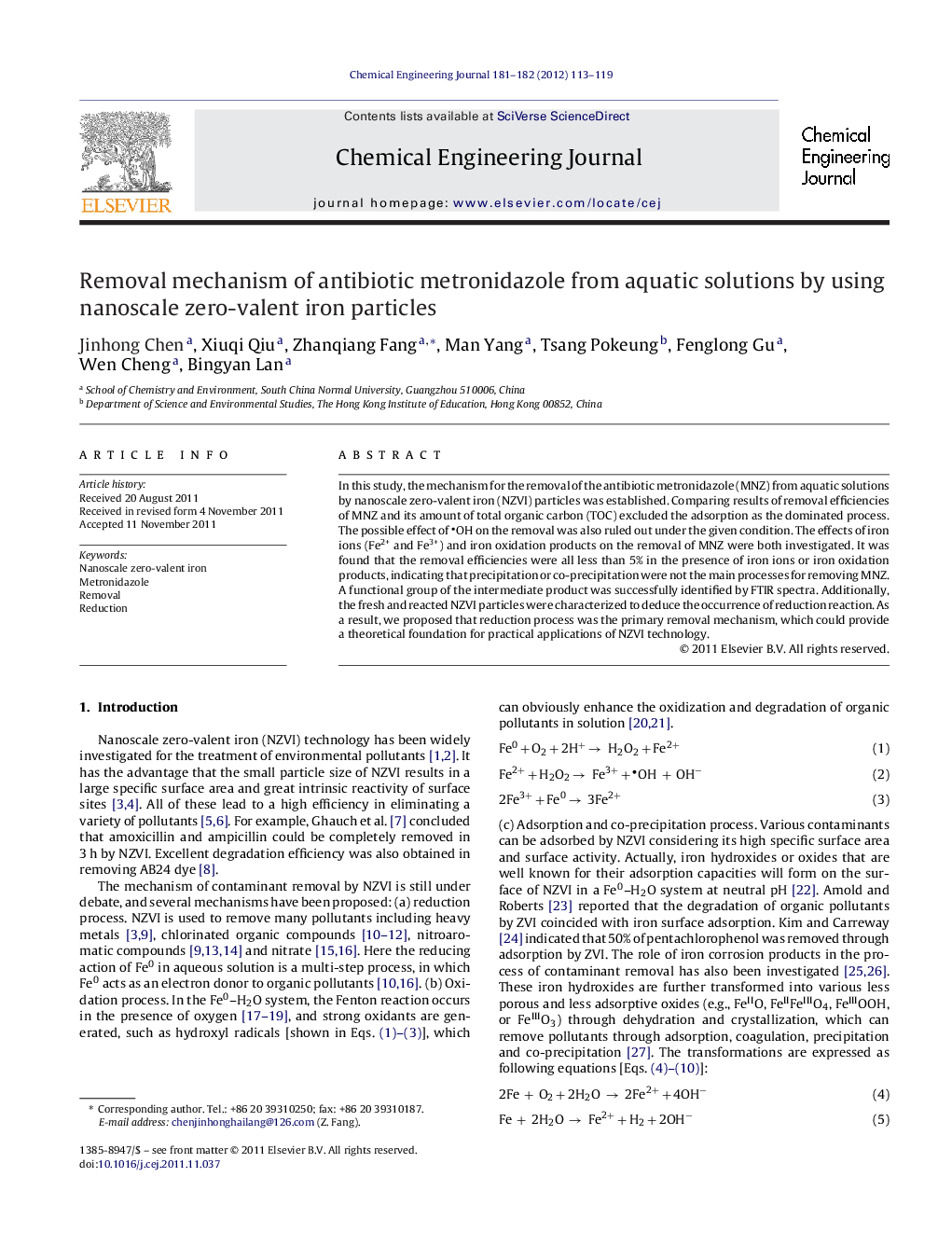| Article ID | Journal | Published Year | Pages | File Type |
|---|---|---|---|---|
| 150184 | Chemical Engineering Journal | 2012 | 7 Pages |
In this study, the mechanism for the removal of the antibiotic metronidazole (MNZ) from aquatic solutions by nanoscale zero-valent iron (NZVI) particles was established. Comparing results of removal efficiencies of MNZ and its amount of total organic carbon (TOC) excluded the adsorption as the dominated process. The possible effect of OH on the removal was also ruled out under the given condition. The effects of iron ions (Fe2+ and Fe3+) and iron oxidation products on the removal of MNZ were both investigated. It was found that the removal efficiencies were all less than 5% in the presence of iron ions or iron oxidation products, indicating that precipitation or co-precipitation were not the main processes for removing MNZ. A functional group of the intermediate product was successfully identified by FTIR spectra. Additionally, the fresh and reacted NZVI particles were characterized to deduce the occurrence of reduction reaction. As a result, we proposed that reduction process was the primary removal mechanism, which could provide a theoretical foundation for practical applications of NZVI technology.
► The removal mechanism is reduction. ► The TOC removal rate and MNZ removal rate was not synchronous. ► Dissolved concentrations of Fe2+, Fe3+ were very low. ► OH radicals could not be generated. ► MNZ was not removed by adsorption, precipitation or co-precipitation.
